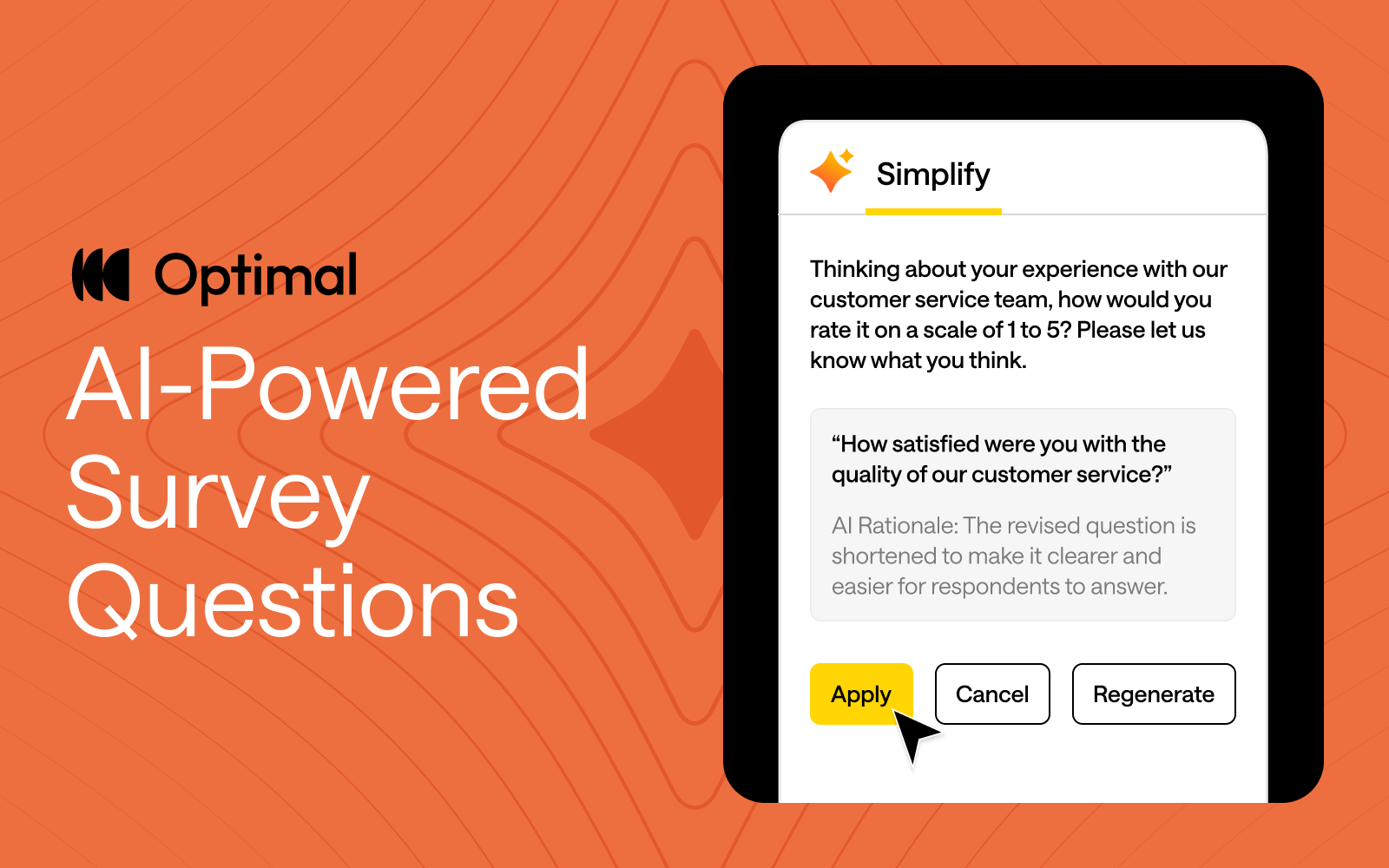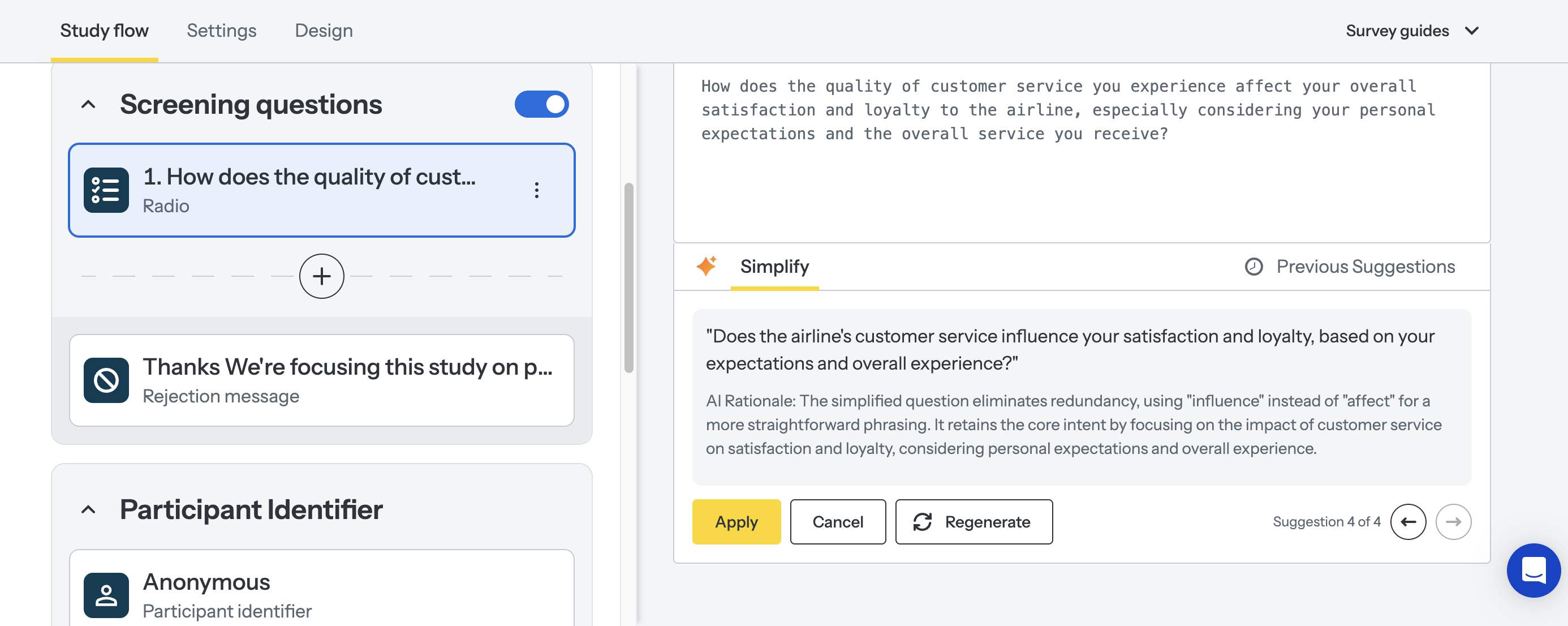
Many smaller product teams find newer research tools like Ballpark attractive due to their promises of being able to provide simple and quick user feedback tools. However, larger teams conducting UX research that drives product strategy need platforms capable of delivering actionable insights rather than just surface-level metrics. While Ballpark provides basic testing functionality that works for simple validation, Optimal offers the research depth, comprehensive analysis capabilities, and strategic intelligence that teams require when making critical product decisions.
Why Choose Optimal over Ballpark?
Surface-Level Feedback vs. Strategic Research Intelligence
- Ballpark's Shallow Analysis: Ballpark focuses on collecting quick feedback through basic surveys and simple preference tests, but lacks the analytical depth needed to understand why users behave as they do or what actions to take based on findings.
- Optimal's Strategic Insights: Optimal transforms user feedback into strategic intelligence through advanced analytics, behavioral analysis, and AI-powered insights that reveal not just what happened, but why it happened and what to do about it.
- Limited Research Methodology: Ballpark's toolset centers on simple feedback collection without comprehensive research methods like advanced card sorting, tree testing, or sophisticated user journey analysis.
- Complete Research Arsenal: Optimal provides the full spectrum of research methodologies needed to understand complex user behaviors, validate design decisions, and guide strategic product development.
Quick Metrics vs. Actionable Intelligence
- Basic Data Collection: Ballpark provides simple metrics and basic reporting that tell you what happened but leave teams to figure out the 'why' and 'what next' on their own.
- Intelligent Analysis: Optimal's AI-powered analysis doesn't just collect data—it identifies patterns, predicts user behavior, and provides specific recommendations that guide product decisions.
- Limited Participant Insights: Ballpark's 3 million participant panel provides basic demographic targeting but lacks the sophisticated segmentation and behavioral profiling needed for nuanced research.
- Deep User Understanding: Optimal's 100+ million verified participants across 150+ countries enable precise targeting and comprehensive user profiling that reveals deep behavioral insights and cultural nuances.
Startup Risk vs. Enterprise Reliability
- Unproven Stability: As a recently founded startup with limited funding transparency, Ballpark presents platform stability risks and uncertain long-term viability for enterprise research investments.
- Proven Enterprise Reliability: Optimal has successfully launched over 100,000 studies with 99.9% uptime guarantee, providing the reliability and stability enterprise organizations require.
- Limited Support Infrastructure: Ballpark's small team and basic support options cannot match the dedicated account management and enterprise support that strategic research programs demand.
- Enterprise Support Excellence: Optimal provides dedicated account managers, 24/7 enterprise support, and comprehensive onboarding that ensures research program success.
When to Choose Optimal
Optimal is the best choice for teams looking for:
- Actionable Intelligence: When teams need insights that directly inform product strategy and design decisions
- Behavioral Understanding: Projects requiring deep analysis of why users behave as they do
- Complex Research Questions: Studies that demand sophisticated methodologies and advanced analytics
- Strategic Product Decisions: When research insights drive major feature development and business direction
- Comprehensive User Insights: Teams needing complete user understanding beyond basic preference testing
- Competitive Advantage: Organizations using research intelligence to outperform competitors
Ready to move beyond basic feedback to strategic research intelligence? Experience how Optimal's analytical depth and comprehensive insights drive product decisions that create competitive advantage.








